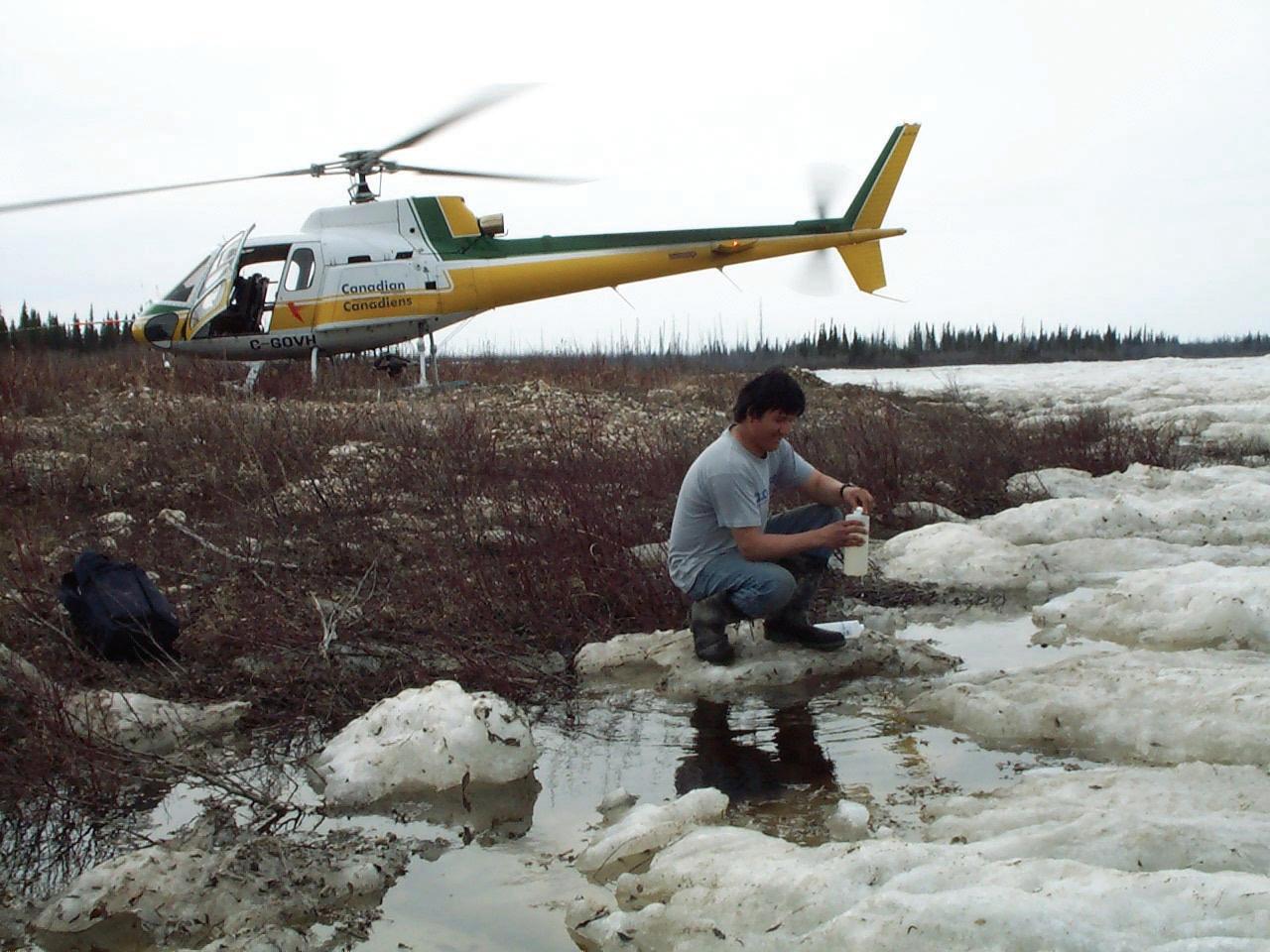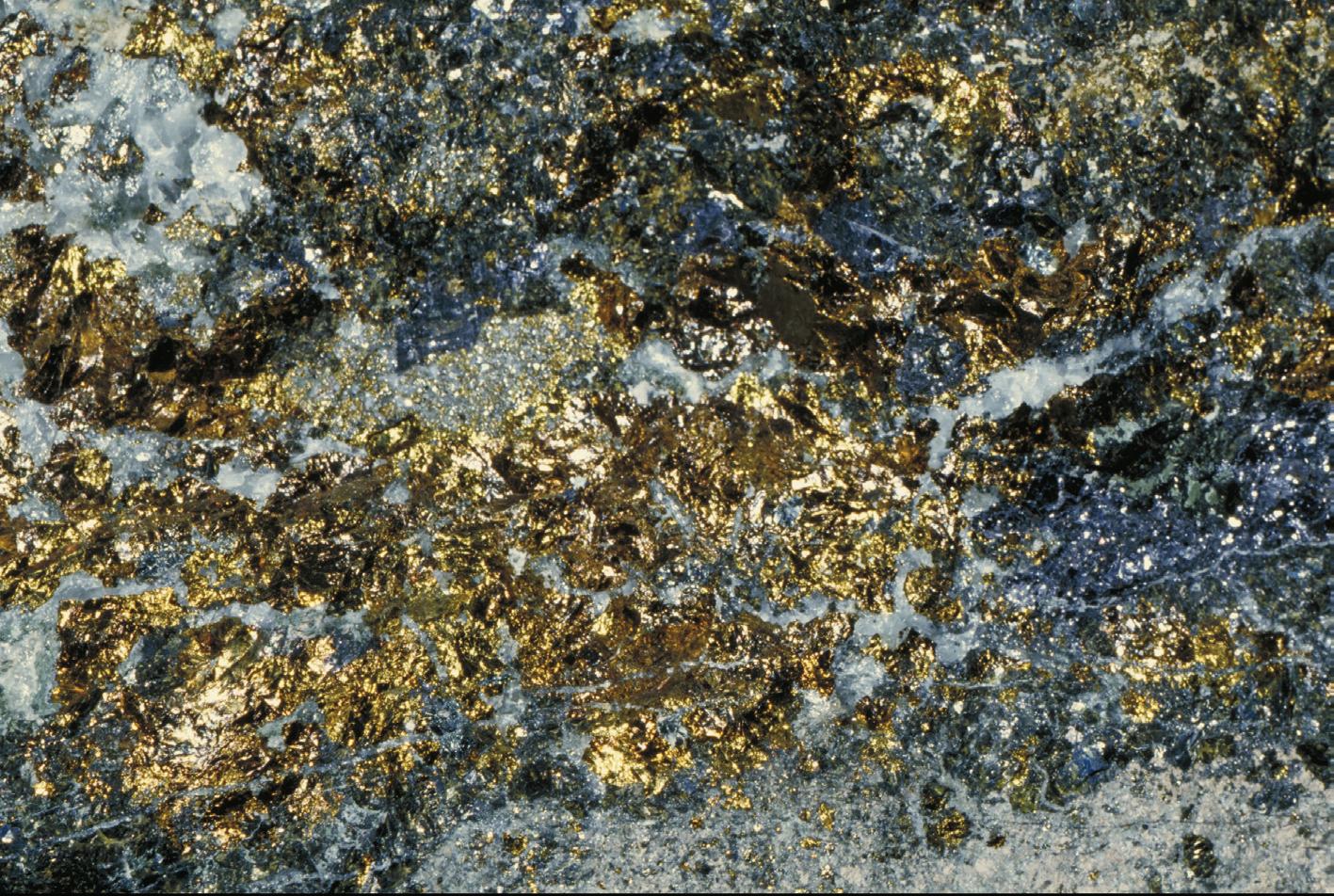
15 minute read
3.3 Learning Activity Become a Young Entrepreneur
Suggested Levels: Intermediate and Senior 1 of 1
Purpose • To identify ways to use interests, skills and knowledge to contribute to the development of a business. • To promote an understanding of resources and programs that assist entrepreneurs. • To motivate students to pursue further exploration and consideration of entrepreneurship.
Time 90 minutes
Resources • Become a Young Entrepreneur student handout • Additional Resources for Young Entrepreneurs student handout • Venture Plan Checklist student handout
Link to Ontario Introduction to Business • Entrepreneurship Curriculum Grades 9 and 10
Career Studies Grade 10 • Exploration of Opportunities • Preparation for Transitions and Change
Designing Your Future • Interpersonal Knowledge and Skills Grade 11 • Preparation for Transitions and Change
Introduction to Entrepreneurial Studies • Ideas and Opportunities Grade 11 • The Venture Plan
The Enterprising Person • The Entrepreneurial Experience Grade 11
Entrepreneurial Studies: • Challenges of a Venture Start-up Venture Planning • Venture Conception Grade 12
Teacher Information
The Mining New Opportunities video/DVD showcases some of the Aboriginal-owned businesses that currently supply goods and services to the mining industry. These include: airline services; janitorial services; housekeeping; catering; and the operation of various retail stores. Other spin-off businesses may include trucking, drilling, blasting, explosives manufacturing and the development of all-weather and winter roads. These businesses all began as entrepreneurial opportunities. Many young people today are considering entrepreneurship as a viable career option.
In this activity, students explore the impact of mining on the economy of a community, identify entrepreneurial opportunities and develop a venture plan for a hypothetical business.
Method
Intermediate 1. The Become a Young Entrepreneur, Additional Resources for Young and Senior Entrepreneurs and Venture Plan Checklist student handouts provide each group Levels with background information and instructions for developing a venture plan.
1 of 1
The Mining New Opportunities video/DVD showcases some of the Aboriginal-owned businesses that supply goods and services to the mining industry. These include: airline services; janitorial services; housekeeping services; catering services; and the operation of various retail stores. Other spin-off businesses may include trucking, drilling, blasting, explosives manufacturing and the development of all-weather and winter roads. These businesses all began as entrepreneurial opportunities. The business owners or entrepreneurs recognized an opportunity for business and incurred the risk to start it, with the intention of earning a profitable income. Starting your own business requires dedication, strong organizational skills, and an excellent idea for a product or service. Today, many young people consider entrepreneurship as an exciting career opportunity. A joint venture with a non-Aboriginal business is a viable option to acquire expertise and management experience first, before you launch into your own venture.
Imagine you have just learned that a gold mine will open and create 375 new jobs in your small northern Ontario community. In preparation for the mine opening, you and your potential business partners discuss possible business opportunities that may arise. Consider the following: the special needs of different groups of people in the community; the types of products or services that would improve their lives; and the ways in which a new business might be developed.
Complete the following statement to create your group’s list of opportunities:
When the mine opens, this town will need a good…
Write a Venture Plan
Decide which of the business opportunities you proposed will be the most successful and the most interesting for you to operate. Prepare to write a venture plan with your group. A venture plan is a written document that gives an overview of your business idea. It tells the entrepreneur’s story, by explaining what you want to do, how you’re going to do it, how much it will cost and how much money you’ll make. A venture plan is required when an entrepreneur approaches a bank for a business loan.
To write your venture plan, follow the outline and answer the questions provided by the Venture Plan Checklist student handout. Use the Additional Resources for Young Entrepreneurs student handout to research funding, information and resources that are available for young entrepreneurs to start up a business.
Thinking of starting a real business? Visit www.cbsc.org/ontario/english/start.cfm
The Canada-Ontario Business Service Centre provides information on programs, services and regulations to Ontario businesses. Visit this government Web site to learn about getting a business started. Topics include:
• a brief description of the four types of business structures and some of the advantages and disadvantages of each; • a glossary of key business terms; • points to consider when naming your business; • an outline of the legal aspects of going into business; • a Web-based workshop designed to provide you with techniques for developing your business, ideas for starting a new venture, and improving your existing small business; and • general information for potential entrepreneurs wishing to start various types of businesses.
Additional Resources for Young Entrepreneurs
1 of 1
www.aboriginalresourcenet.com
This user-friendly resource site is designed to aid Aboriginal people’s search for information required to develop their entrepreneurial skills. This database contains information and programs about: education and training; business planning; sources of funds; business environment; and help to run your business.
www.ontario-canada.com
The Ontario Ministry of Economic Development and Trade provides numerous programs to encourage young people to start their own businesses. These include awards of up to $3,000 to help you start up and run your own summer business, and hands-on business training. Visit the Aboriginal Affairs section of the site to see how the Office of Aboriginal Affairs helps to connect Aboriginal entrepreneurs and businesses with services and resources at the Ministry of Economic Development and Trade.
www.aboriginalbusiness.on.ca
Aboriginal Development Online provides an extensive list of programs and services available provincially and nationally in Canada that can benefit new and existing Aboriginal entrepreneurs.
http://strategis.ic.gc.ca/epic/Internet/inabc-eac.nsf/en/home
Aboriginal Business Canada (ABC) is an Industry Canada program that promotes the growth of commerce as one means towards economic self-sufficiency for all Aboriginal people. ABC provides financial assistance, information, resource materials and referrals to other possible sources of financing or business support.
www.cybf.ca
The Canadian Youth Business Foundation is the national leader in youth entrepreneurship through mentorship and financial support resulting in sustainable economic development. This foundation provides information on start-up financing and learning resources.
www.nacca.net/programs.html#first
The First Nations and Inuit Youth Business Program works with financial institutions to offer on-reserve First Nations and Inuit community youth business opportunity counseling and advice, mentoring, and start-up funds to explore or develop a business opportunity.
www.ccab-canada.com
The Canadian Council for Aboriginal Business is a non-profit organization that focuses on sustainable economic development for Aboriginal communities and their businesses.
Other Publications of Interest
Canadian Aboriginal Business: Network and Communities Directories The Canadian Aboriginal Business and Communities Directories are reference guides that allow you to discover and directly reach over 20,000 Aboriginal companies and organizations. Visit www.indianamarketing.com for more information.
1. Title Page
Names of the owners Name of company Address Telephone, fax and email
2. General Description of Business Venture
What is the purpose of your business? What service(s) or product(s) do you provide? What do you expect to happen to your business in the future? Who will do the work at your company? 1 of 1
3. Management Team
Who will run the daily operations of your business? What skills does each individual bring to the business?
4. Financial Data
Where will your money come from to start the company? How much money of your own do you plan to invest into the business? What income do you predict from your operations for the first year? Second year? Within the first five years?
5. Marketing Plan
What type of advertising do you plan to use? Who are your potential customers? Have you chosen a location? What are the advantages of your location choice? What day-to-day promotions do you plan to use to market your business?
6. Conclusion
Have you made any assumptions about this business that may not turn out exactly as you anticipated?
Mining Terms
Glossary
1 of 2
Acid Rain
Anomaly
Assay Rain containing increased acid content, due to atmospheric pollutants, that is harmful to the environment.
An area on the surface of the Earth, or below, that has different properties than the surrounding area (e.g. one spot on the Earth may be highly magnetic while the area around it is not magnetic at all).
To chemically analyze a rock sample to determine the valuable metal or mineral content.
Cage A type of elevator used to transport miners and their equipment to the underground workings of a mine.
Concentrate A fine, powdery product of the milling process containing a high percentage of valuable metal.
Contaminate To make unfit for use by the introduction of undesirable substances.
Core A long continuous sample of rock brought up from the Earth by diamond drilling.
Crosscut A horizontal opening in an underground mine that is driven from a shaft at a right angle to the direction of a valuable rock formation.
Cyanide Process A method of extracting exposed gold or silver grains from ground ore by dissolving it in a weak cyanide solution.
Dimension Stone Rock that is extracted from quarries to be cut to specific dimensions and used for building stone, tiles, roofing, countertops and paving.
Drifts Emissions Effluent Horizontal tunnels that lead from the shaft to the orebody.
Substances discharged into the air.
Waste material (smoke, liquid industrial refuse, or sewage) discharged into the environment.
Extract Face To remove ore from the ground.
The location in the mine where ore is being extracted from the Earth.
Flotation Process A type of separation process in which the desired metal or mineral is coated by a chemical that makes it float to the surface of a liquid mixture.
Fluorescence The property of emitting electromagnetic radiation, usually as visible light, resulting from the absorption of radiation from some other source.
Fly-in Operation A mining operation with no road access.
Grease Table A surface covered with grease, to which diamonds will stick while waste debris is washed away.
Host Rock The rock surrounding an ore deposit.
Metal
Mill Any of various opaque, fusible, ductile, and typically lustrous substances that are good conductors of heat and electricity.
A building where broken ore is crushed to a fine powder in order to separate out a concentrate of valuable metals or minerals.
Mineral
Muck Naturally occurring homogeneous, inorganic chemical compounds which are the building blocks of rocks. Every mineral has set internal molecular structure, crystal form, and identifying physical properties.
To load broken ore into a scoop that will transport it to the shaft.
Open Pit Mine A broad, massive, often funnel-shaped excavation that is open to the air and used to extract or mine valuable metals, minerals or rocks - also called a surface mine.
2 of 2
Orebody A well-defined, solid, continuous mass of material containing enough ore (valuable metal or mineral in rock) to make mining economically worthwhile.
Polishing Pond The last in a series of settling ponds through which mill effluent flows before being discharged into the natural environment.
Prospecting The process of searching for valuable minerals, oil or gas by studying rocks on the surface, or below the surface (by drilling deep boreholes).
Reclamation A process which returns land to a safe, stable and productive environmental state after mining is complete. Continuous or concurrent reclamation describes this process when it is put into action during the life of the mine.
Rock
Scoop
Shaft
Skip A naturally formed, consolidated material composed of two or more minerals and having some degree of chemical and mineralogical consistency.
A large machine, combining a front-end loader and a truck, used to transport broken ore from the face to the shaft.
A deep, vertical hole dug below the surface of the Earth for the purpose of opening and servicing an underground mine. Shafts usually contain an elevator-type hoist that lifts people or machinery to the different levels of the mine.
The bucket used to lift the broken rock and ore from the underground mine to the surface.
Slurry Smelting
Stope A mixture of water with finely ground ore used as part of a separation process.
The process of removing or separating metals from ore by melting the finely crushed concentrate from the mill.
The production centre of an underground mine, where the ore taken from the face is first broken.
Subsurface The area below the surface of the Earth.
Sulphur Dioxide A gas that is released during the smelting of most sulphide ores. It is either converted into sulphuric acid or released into the atmosphere in the form of a gas.
Surface Mine A broad, massive, often funnel-shaped excavation that is open to the air and used to extract or mine valuable metals, minerals or rocks - also called an open pit mine.
Sustainable Development Industrial development that does not detract from the potential of the natural environment to provide benefits to future generations.
Tailings Waste materials rejected from a mill after most of the recoverable valuable minerals have been extracted.
Tailing Pond/Impoundment A low-lying depression used to confine tailings, the prime function of which is to allow enough time for heavy metals to settle out or for cyanide to be destroyed before water is discharged into the local watershed.
Treatment Wetland A constructed wetland used to treat water.
Underground Mine A mine that is entirely under the surface of the Earth.
Ventilation Shafts Vertical tunnels that lead from the ground surface to the underground mine to bring fresh air.
Wastewater Water that requires treatment to remove pollutants.
Overview
Speaker’s Guide
1 of 2
This Speaker’s Guide has been created to assist mining industry professionals wishing to use the Mining New Opportunities video/DVD as a communications tool to complement their existing efforts to improve understanding of the nature of the minerals industry in First Nations communities.
Project History
During a series of visits to Northern Ontario First Nations communities in 2001, and in consultation with these communities, John Gammon, Assistant Deputy Minister, Ontario Ministry of Northern Development and Mines, identified the need for specific video/DVD and written communication tools.
These tools were needed to help explain the role of government in mineral development, the nature of exploration, mine construction, operation and closure activities and opportunities for First Nation peoples to participate in and benefit from responsible mineral development.
To address this need, the Ontario Mining Association decided to produce a video/DVD that would illustrate modern mine practices, with an emphasis on environmental responsibility, and employment and entrepreneurial opportunities for First Nations people.
Objectives
The Mining New Opportunities video/DVD provides an introduction to the modern mining industry, and emphasizes the changing attitudes towards environmental protection and the importance of sustainable development. It has been designed to:
• provide First Nations people with current information about mining, including the skills needed by the industry, as well as employment and entrepreneurial opportunities; • promote partnerships with First Nations to allow for greater participation in the social and economic benefits of responsible mineral development; • encourage a better understanding and communication with First Nations with respect to the purpose and value of exploration and mining, that could lead to a more cooperative relationship with government and industry; and • lay the foundation for a better understanding of the mining sequence, and roles of all concerned parties, that may improve relationships during initial prospecting and exploration in areas of First Nations’ traditional land use.
Suggested Introduction/Conclusion
2 of 2
To introduce and conclude the Mining New Opportunities video/DVD, it is recommended that speakers begin and end with a brainstorming session that is designed to establish the attendees’ perceptions of the mining industry before and after viewing the video/DVD.
A series of questions for discussion are provided below, to help determine the kind of images the attendees are familiar with and the information that they have about mining. Facilitate a discussion using these questions before watching the video/DVD. Summarize both the positive and negative aspects of mining, to present a clear picture of the attendees’ current perceptions of the mining industry. After watching the video/DVD, review the questions asked in the preliminary discussion and update the answers. Ask attendees if their perceptions of the mining industry have changed? Why or why not?
It is valuable to ask attendees to describe their needs, in terms of the information they would like to acquire about the mining industry. Offer to provide guidance as to where attendees can access this needed information.
Questions for Discussion
• What do you think a company’s responsibilities should be toward the environment before opening a mine? • How do miners extract minerals? • What do you think it is like to work in a mine? • What kinds of jobs are offered by the mining industry? • What is reclamation? • What are minerals used for? • Is mining a high-tech industry or a low-tech industry?

Ice
Ice Peat
Mud, sand, and gravel
Sand
Map Legend
ICE
Peat
Mud, sand, and gravel
Sand
ICE AGE SEDIMENT ROCK
Silt and clay (or mud)
Sand and gravel
Till
Ice Ice Silt and clay (or mud) Carbonate rock Sand and gravel Clastic sedimentary rock Metamorphosed clastic Till sedimentary rock Peat Volcanic rock Mud, sand and gravel Metamorphosed volcanic rock Sand Granitic rock Gneissic rock
Ice
MODERN SEDIMENT
Peat
Peat Mud, sand, and gravel Mud, sand, and gravel
Sand
Sand
Silt and clay (or mud) Silt and clay (or mud) Sand and gravel Silt and clay (or mud)
Sand and gravel
Till
Carbonate rock
Clastic sedimentary rock
Metamorphosed clastic sedimentary rock Volcanic rock Carbonate rock
Clastic sedimentary rock
Metamorphosed clastic sedimentary rock Volcanic rock
Metamorphosed volcanic rock
Granitic rock
Gneissic rock



Mining New Opportunities
Teacher’s Resource and Speaker’s Guide contains 13
learning activities for educators teaching youth in junior, intermediate
and senior grade levels. The learning activities are designed to build on the
themes presented by the video/DVD. Explore the mining process, discover
careers in the mining industry, create a venture plan for a new business,
investigate how sustainable development applies to mining, and unearth
the importance of rocks, minerals, metals and mining in everyday life.
Also available in printable format on CD-ROM.
www.oma.on.ca
Thank you for your support!


Printed in Canada • Copyright 2005 • Design: twgcommunications.com







